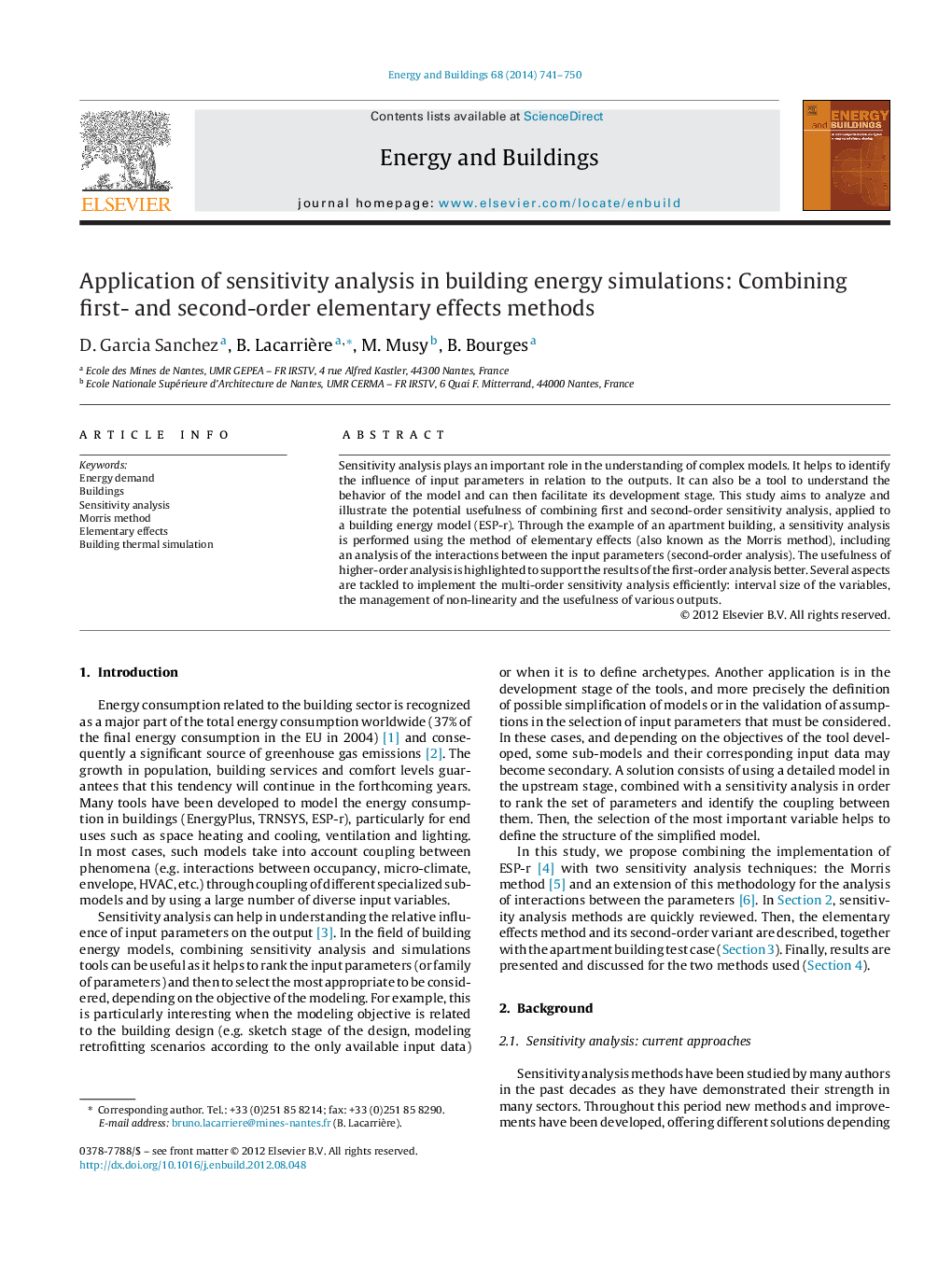| Article ID | Journal | Published Year | Pages | File Type |
|---|---|---|---|---|
| 263114 | Energy and Buildings | 2014 | 10 Pages |
Sensitivity analysis plays an important role in the understanding of complex models. It helps to identify the influence of input parameters in relation to the outputs. It can also be a tool to understand the behavior of the model and can then facilitate its development stage. This study aims to analyze and illustrate the potential usefulness of combining first and second-order sensitivity analysis, applied to a building energy model (ESP-r). Through the example of an apartment building, a sensitivity analysis is performed using the method of elementary effects (also known as the Morris method), including an analysis of the interactions between the input parameters (second-order analysis). The usefulness of higher-order analysis is highlighted to support the results of the first-order analysis better. Several aspects are tackled to implement the multi-order sensitivity analysis efficiently: interval size of the variables, the management of non-linearity and the usefulness of various outputs.
► We combine 1st and 2nd order of sensitivity analysis applied to ESP-r through a case study. ► We implement Morris method and its extension to second order. ► We illustrate the potential offered by various outputs to improve the analyze. ► We propose solutions to differentiate non-linearity from higher order interaction.
